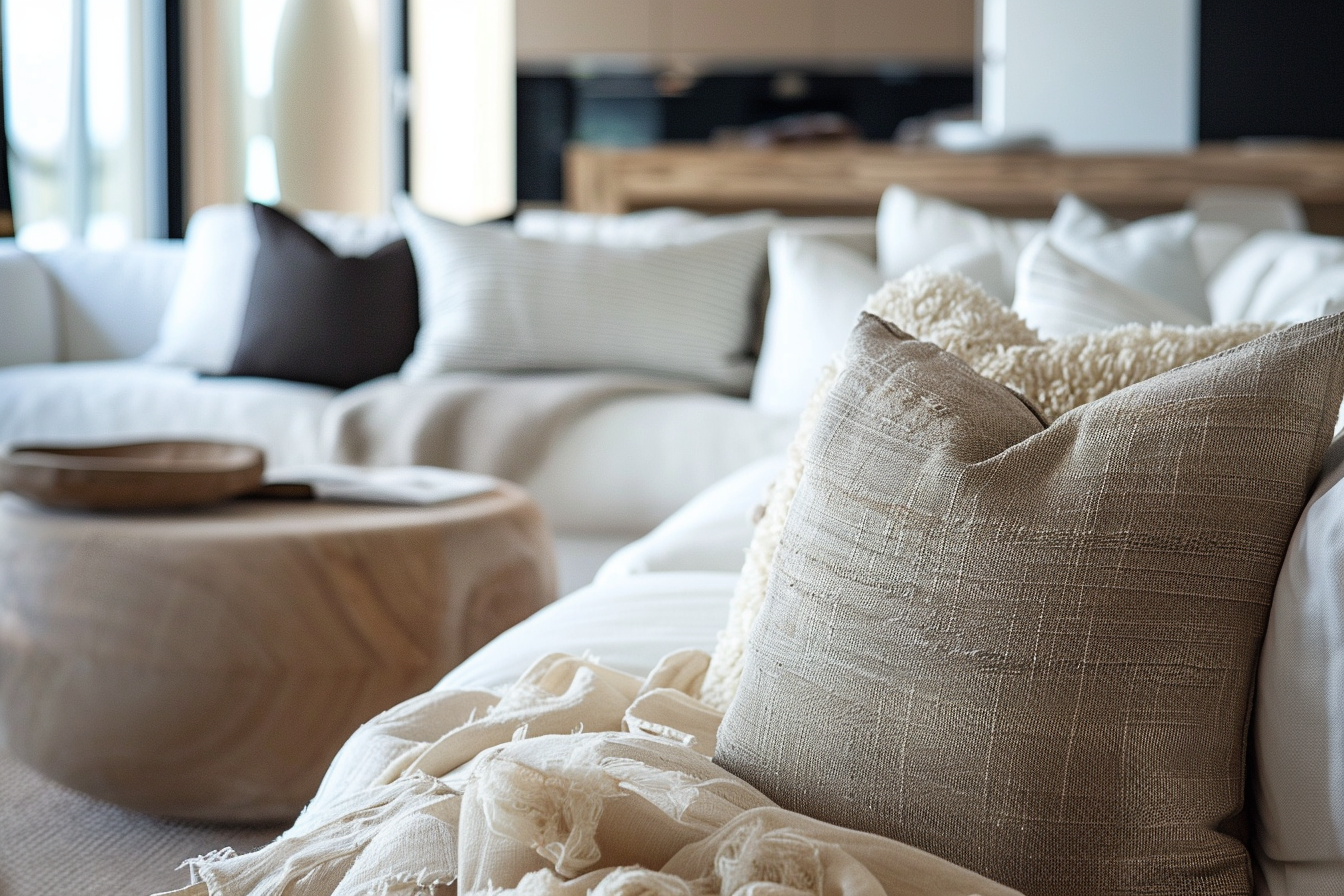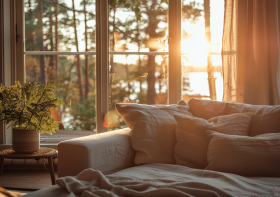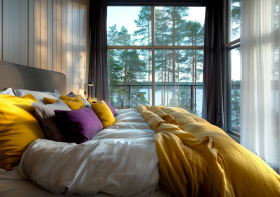Embracing the Serenity of Coastal Interior Design
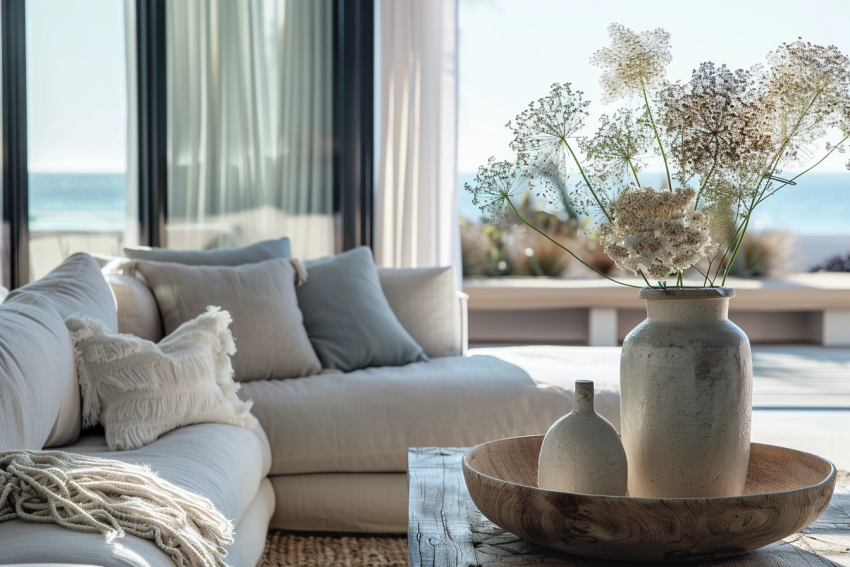
The coastal interior design style, often referred to as “beach house” style, captures the essence of a breezy, sun-washed coastline right in your home. Characterized by light, airy spaces with a calm and casual vibe, this style evokes the simplicity and tranquility of beach living. Whether you’re landlocked or steps away from the sea, integrating coastal design elements can transform your home into a serene retreat.
1. Color Palette: Reflect the Shoreline Coastal design color schemes are inspired by the beach’s natural palette. Soft neutrals like sandy beiges, whites, and grays provide a clean, tranquil backdrop, while blues ranging from the palest ice to deep navy evoke the sea and sky. Accents in soft pinks, greens, and yellows can mimic the colors of seashells and coastal flora. The overall effect is light and breezy, aiming to create a space that feels both calm and inviting.
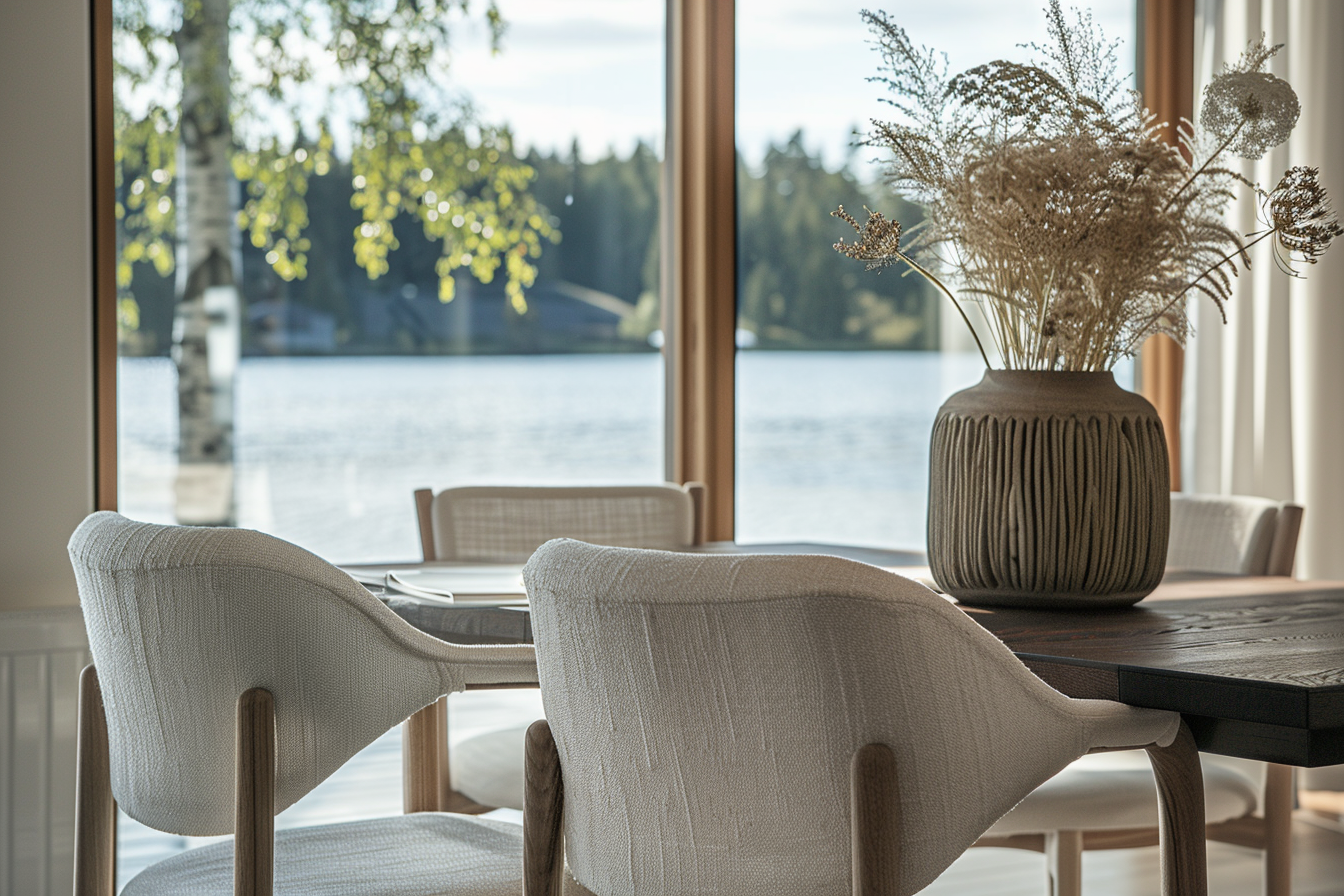
2. Natural Light: Bring the Outdoors In Maximizing natural light is crucial in coastal interior design. Allow as much sunlight as possible to permeate the space, enhancing an open, airy feel. Use light window treatments or sheer fabrics that flutter in the breeze and don’t block the sun’s rays. Skylights and large windows also enhance this effect, connecting the indoors with the natural environment outside.
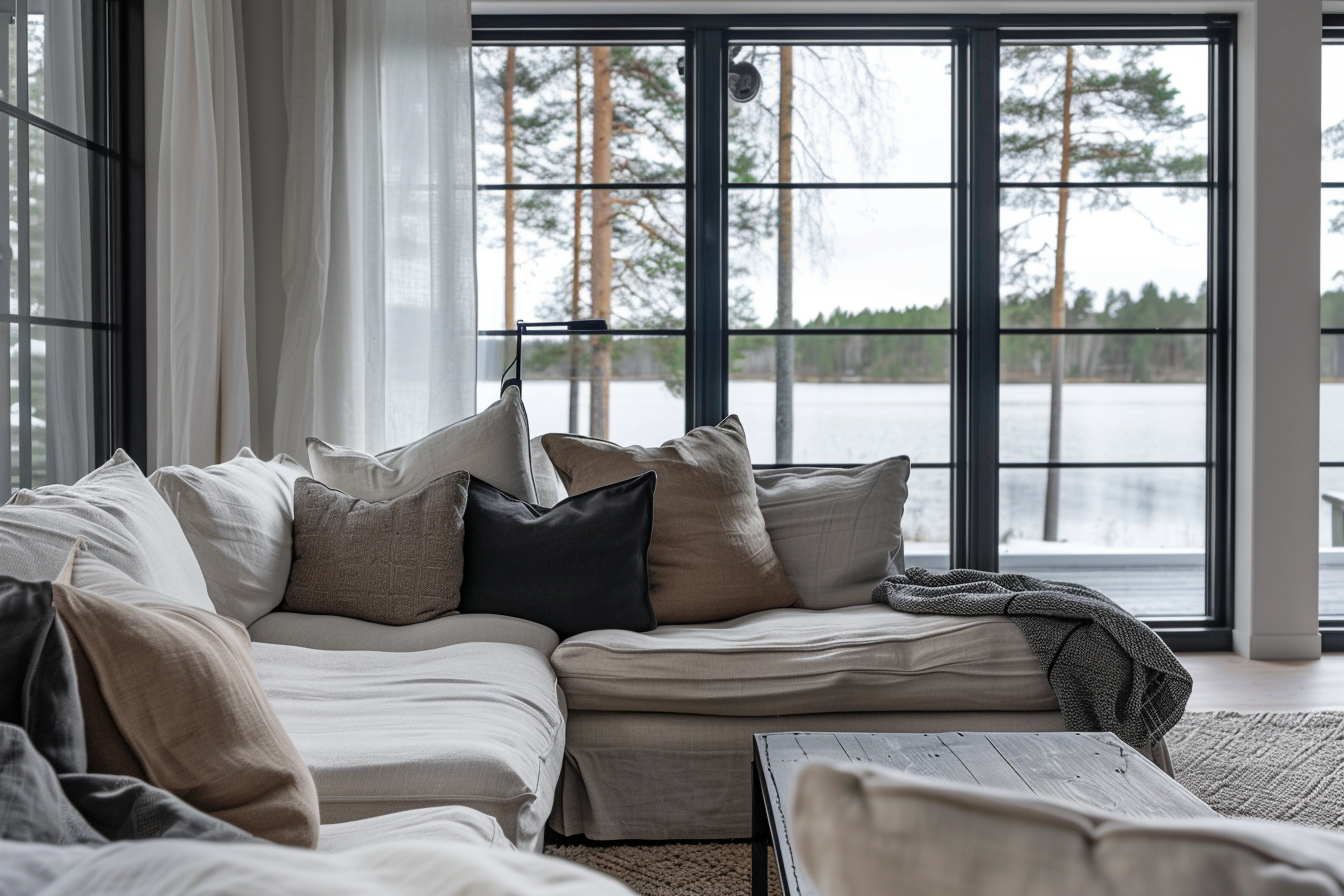
3. Materials: Choose Natural, Rustic Finishes Incorporate materials that you might find along the coast. Weathered wood in shades of gray and driftwood browns are perfect for furniture and decorative elements, evoking a sense of items worn by time and tide. Linen, cotton, and other light, natural fabrics are ideal for upholstery, curtains, and throw pillows, providing comfort without sacrificing the light, airy quality that defines coastal decor.
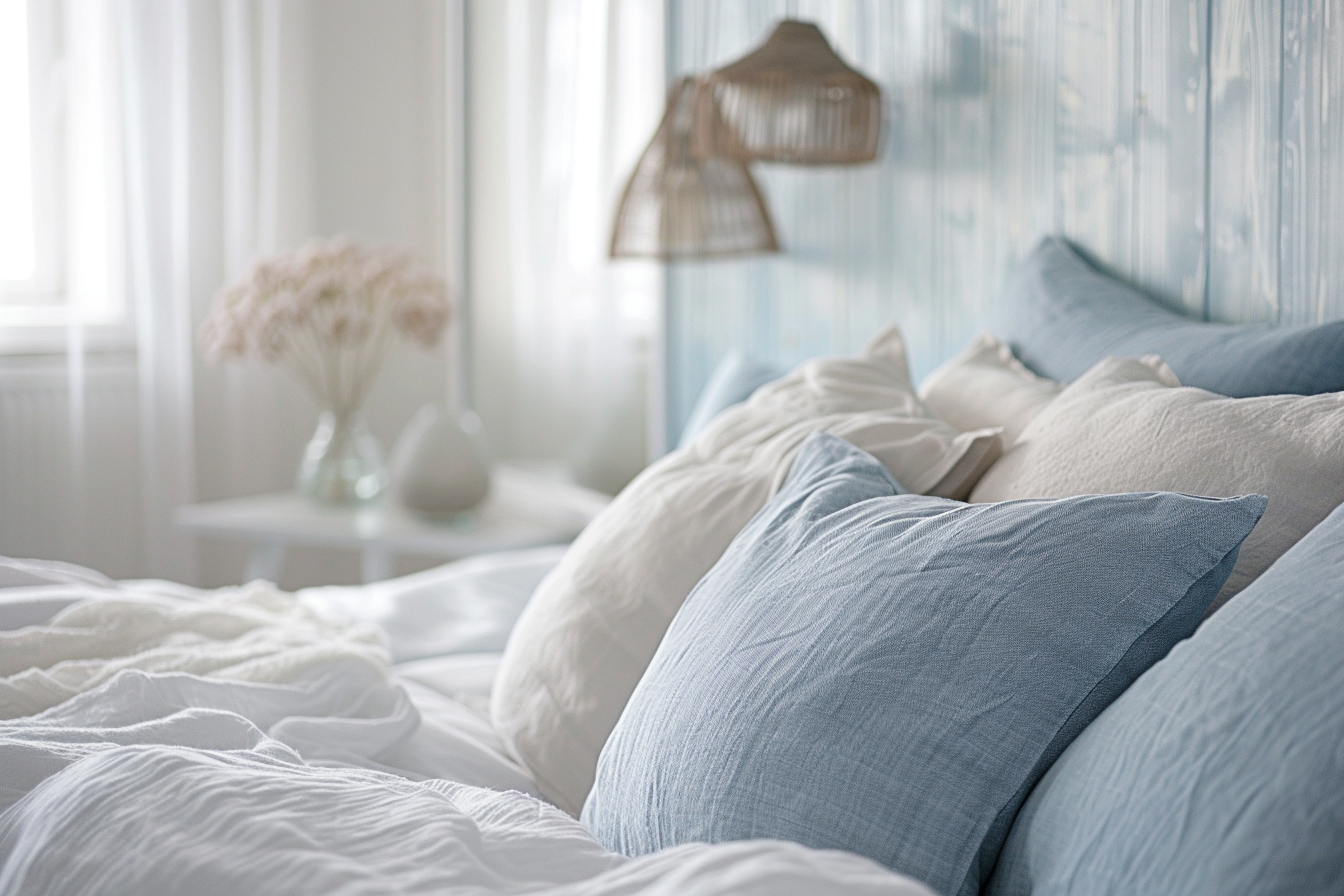
4. Furniture: Casual and Comfy Choose furniture that invites relaxation—plush sofas with slipcovers, wicker armchairs, and rustic wooden coffee tables. The furniture should suggest casual comfort and easy living, perfect for lounging after a day at the beach. Slipcovers in light fabrics are not only practical for cleaning but also contribute to the laid-back vibe essential to coastal interiors.
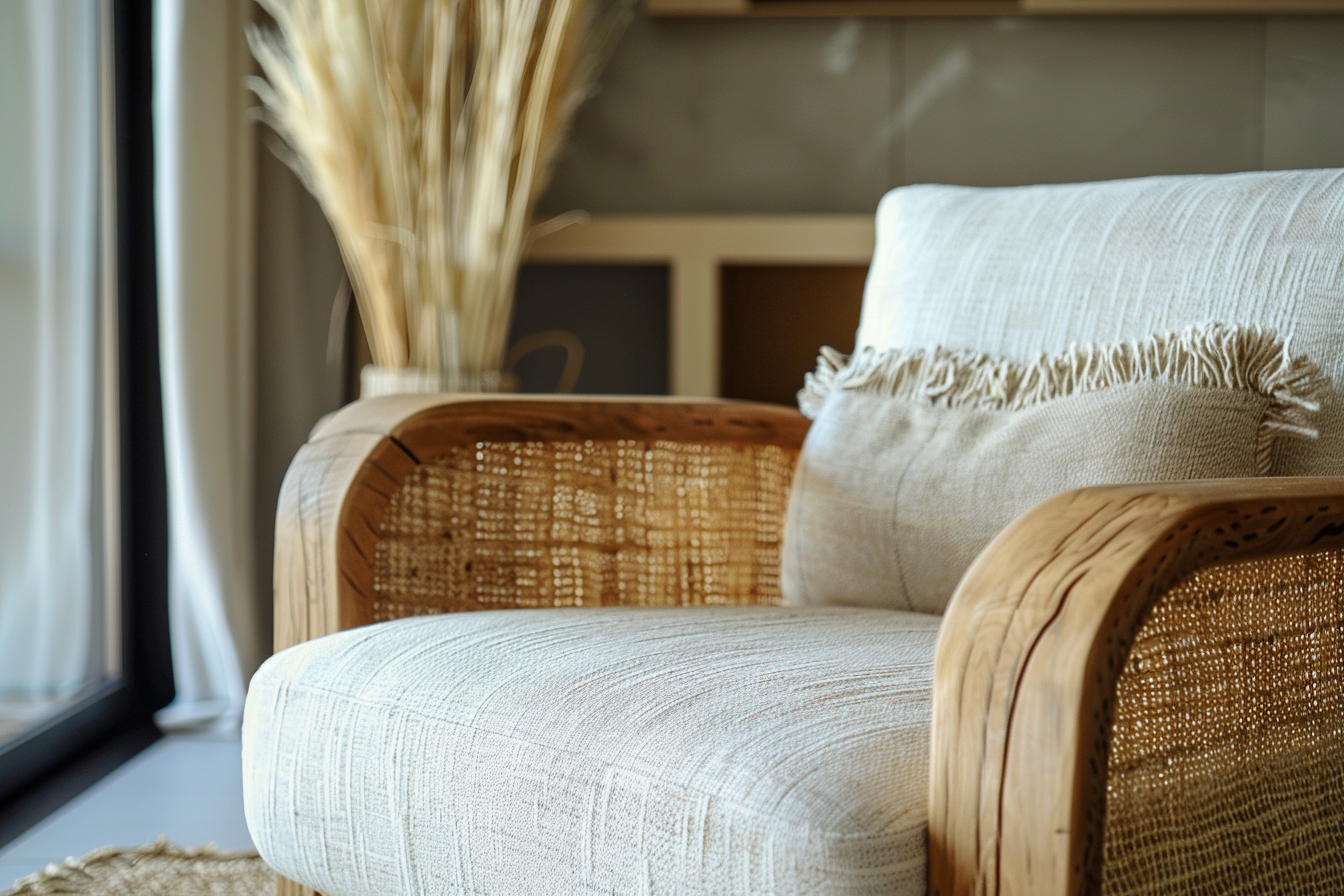
5. Patterns and Textures: Subtle Yet Distinct Embrace patterns and textures that reflect the coast. Stripes and prints inspired by marine life, such as coral and seashells, add character without overwhelming the space. Incorporate jute rugs, sisal, and seagrass for texture underfoot, and consider using shiplap or beadboard on walls to add subtle architectural interest.
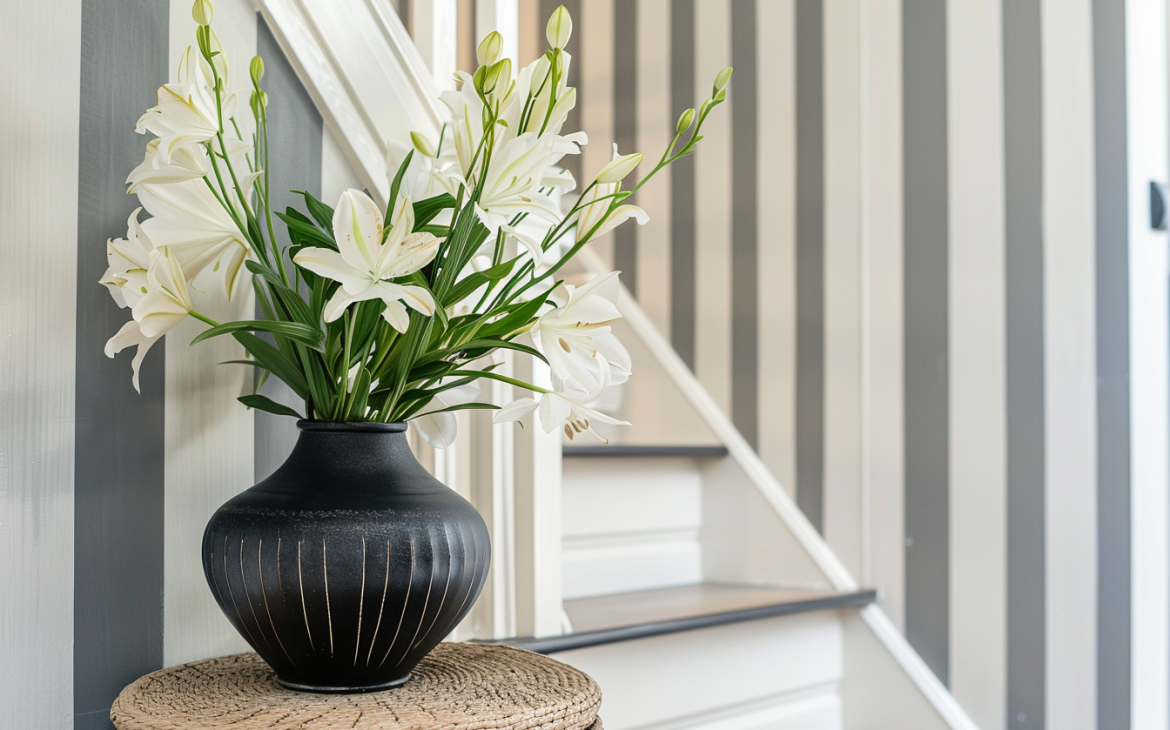
6. Accessories: Understated Coastal Elements Decorate with accessories that hint at beach living without becoming cliché. Opt for art that depicts ocean scenes, framed nautical charts, or mirrors bordered with shells or driftwood. Vintage maritime objects like a ship’s wheel or a set of oars can be repurposed into striking decor pieces. Plants that evoke tropical greenery can also enhance the coastal vibe, adding life and color.
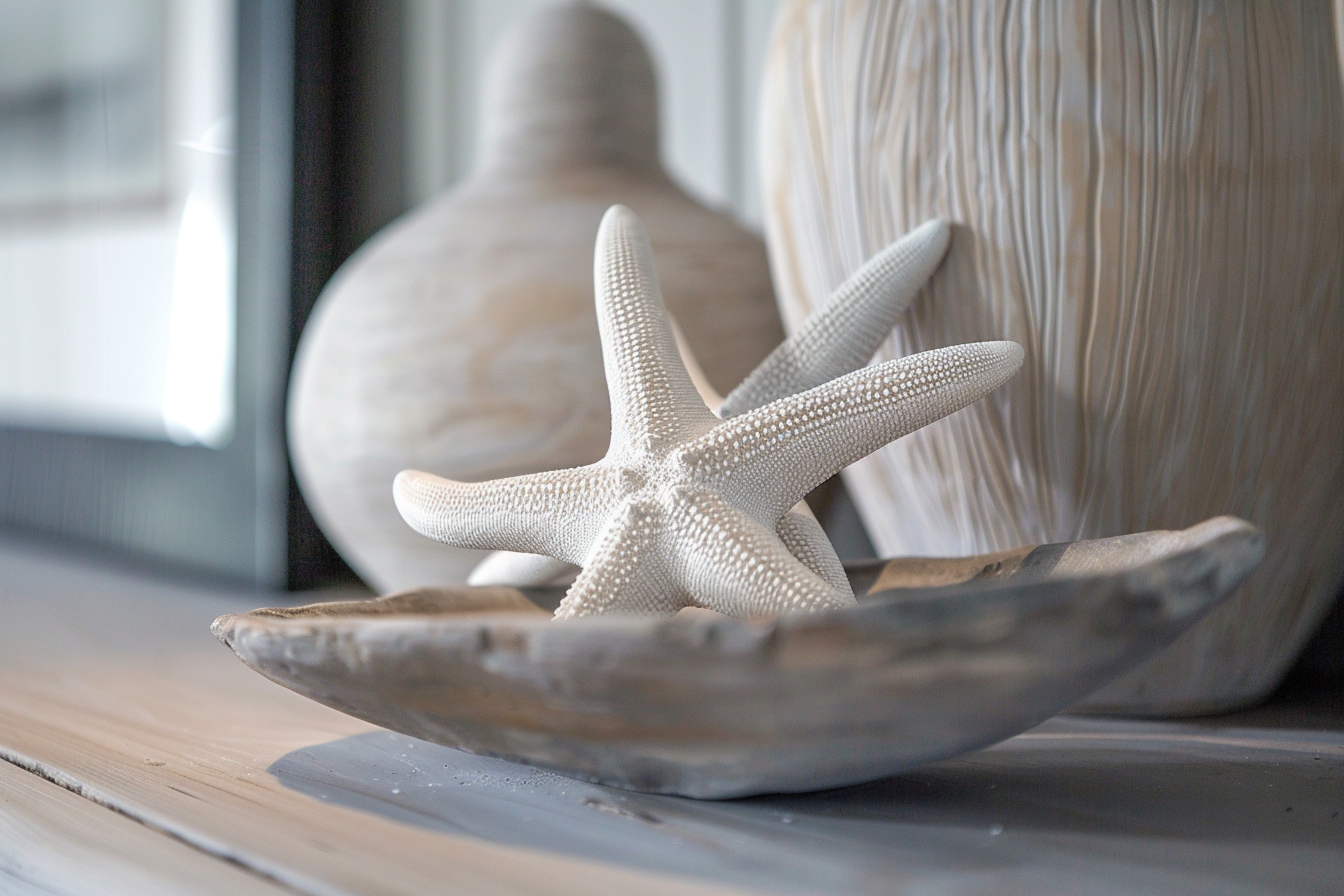
7. Create a Seamless Indoor-Outdoor Connection Finally, blur the lines between indoors and outdoors. Incorporate elements that extend the living space outside, such as French doors opening onto a deck or a sunroom with comfortable seating and coastal decor. Outdoor spaces should feel like a continuation of the interior, with similar color schemes and materials.
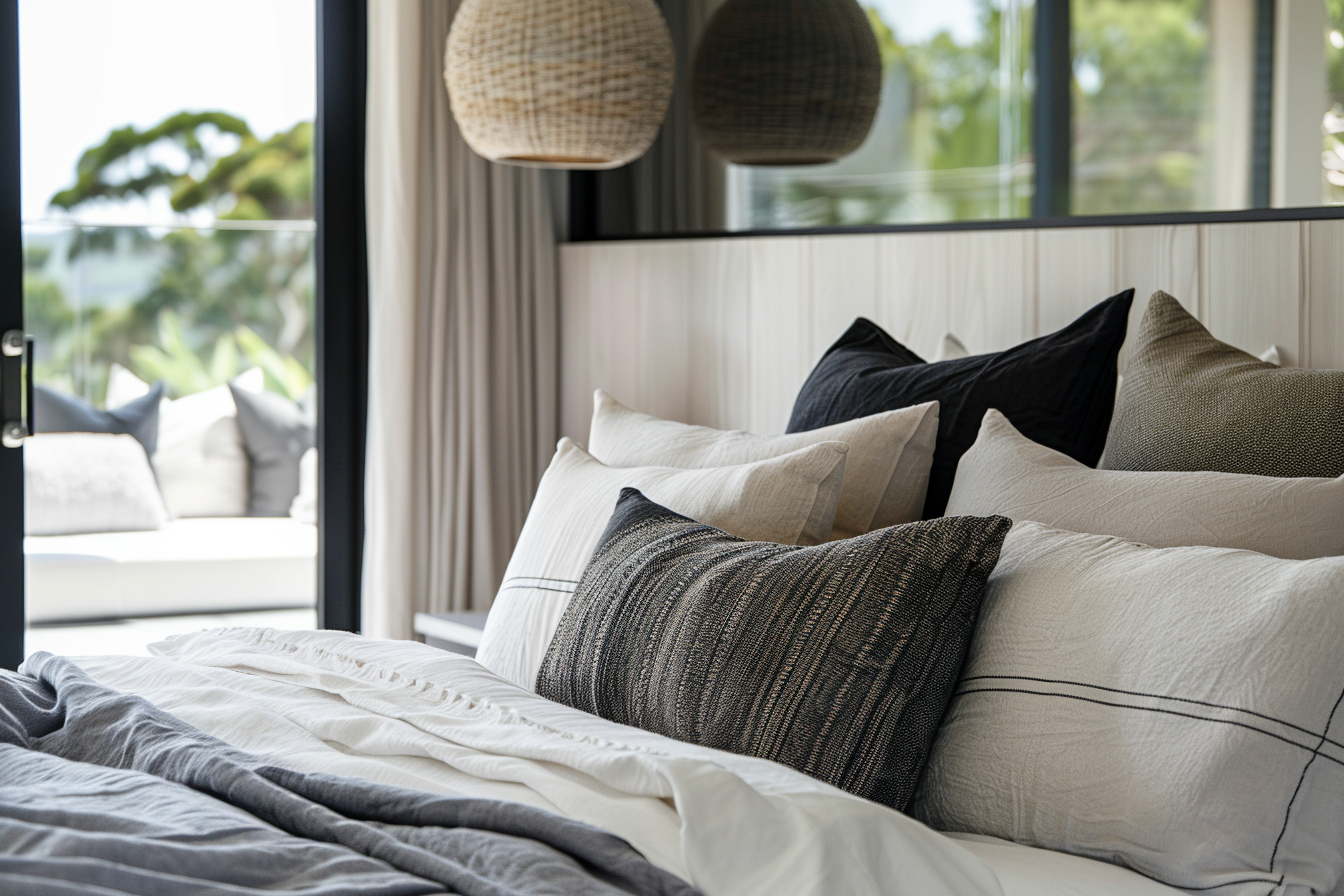
Coastal interior design is all about creating a space that feels relaxed, refreshing, and inspired by the natural beauty of the seaside. By incorporating these elements into your home, you can create a peaceful sanctuary that feels like a permanent vacation. Whether you’re redesigning a single room or your entire home, the principles of coastal design can bring lightness, tranquility, and a breath of salty air into your living spaces.
To deepen your understanding of crafting unique and personalized spaces, consider acquiring my book, Basics of interior design, available on Amazon. This guide offers a comprehensive exploration of various design principles tailored to distinct environments, providing you with the knowledge and inspiration needed to transform any space. If you want to learn more about different design styles in Interior design, buy my book 20 styles of Interior design from Amazon.
